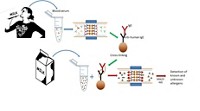Advertisement
Grab your lab coat. Let's get started
Welcome!
Welcome!
Create an account below to get 6 C&EN articles per month, receive newsletters and more - all free.
It seems this is your first time logging in online. Please enter the following information to continue.
As an ACS member you automatically get access to this site. All we need is few more details to create your reading experience.
Not you? Sign in with a different account.
Not you? Sign in with a different account.
ERROR 1
ERROR 1
ERROR 2
ERROR 2
ERROR 2
ERROR 2
ERROR 2
Password and Confirm password must match.
If you have an ACS member number, please enter it here so we can link this account to your membership. (optional)
ERROR 2
ACS values your privacy. By submitting your information, you are gaining access to C&EN and subscribing to our weekly newsletter. We use the information you provide to make your reading experience better, and we will never sell your data to third party members.
Biological Chemistry
New Dust Mite Allergens Discovered
Medicinal Chemistry: Study finds allergens unique to a group of Thai patients, paving the way to personalized allergy treatment
by Melissa Pandika
February 5, 2016

Researchers have discovered new dust mite allergens that affect a group of Thai patients, but not other previously studied populations. The findings highlight the importance of personalizing allergy diagnosis and treatment to different genetic backgrounds and geographic regions. (J. Proteome Res. 2016, DOI: 10.1021/acs.jproteome.5b00663)
Allergy symptoms occur when immunoglobin E (IgE) antibodies bind to a material, or allergen, triggering itchiness, wheezing, or even life-threatening anaphylactic shock. As many as 60 to 80% of allergy sufferers are sensitive to dust mites. Physicians can treat dust mite allergies with immunotherapy, desensitizing patients’ immune systems by administering progressively larger doses of a crude extract made from dust mite bodies. The problem is that these crude extracts can vary in composition and quality.
Anchalee Tungtrongchitr and her colleagues at Mahidol University, in Bangkok, wanted to develop a more targeted immunotherapy approach that included only mite allergens. While other groups have characterized mite allergens in patients in Europe, the U.S., and Korea, Tungtrongchitr wanted to use the allergens most likely to elicit a reaction in Thai patients. To determine which proteins in dust mites were allergens, the researchers used two-dimensional gel electrophoresis to separate the proteins found in whole-body extracts of Dermatophagoides farinae, the most common dust mite species in Thailand. They then probed the proteins with serum from 20 D. farinae allergy patients from Bangkok’s Siriraj Hospital and noted which proteins bound IgE in these patients’ serum.
The researchers identified 35 allergens among the patients, including three major allergens that bound IgE in more than half of patients. One major allergen, aconitate hydratase, and several of the minor allergens had never been reported as mite allergens, underscoring that sensitivity can vary between populations—and highlighting the need to tailor treatments. “Every country should find their own battery of allergens,” Tungtrongchitr says. She envisions diagnosing patients with a skin prick test for major allergens and administering a personalized immunotherapy cocktail of those that trigger a response in the individual tested.




Join the conversation
Contact the reporter
Submit a Letter to the Editor for publication
Engage with us on Twitter